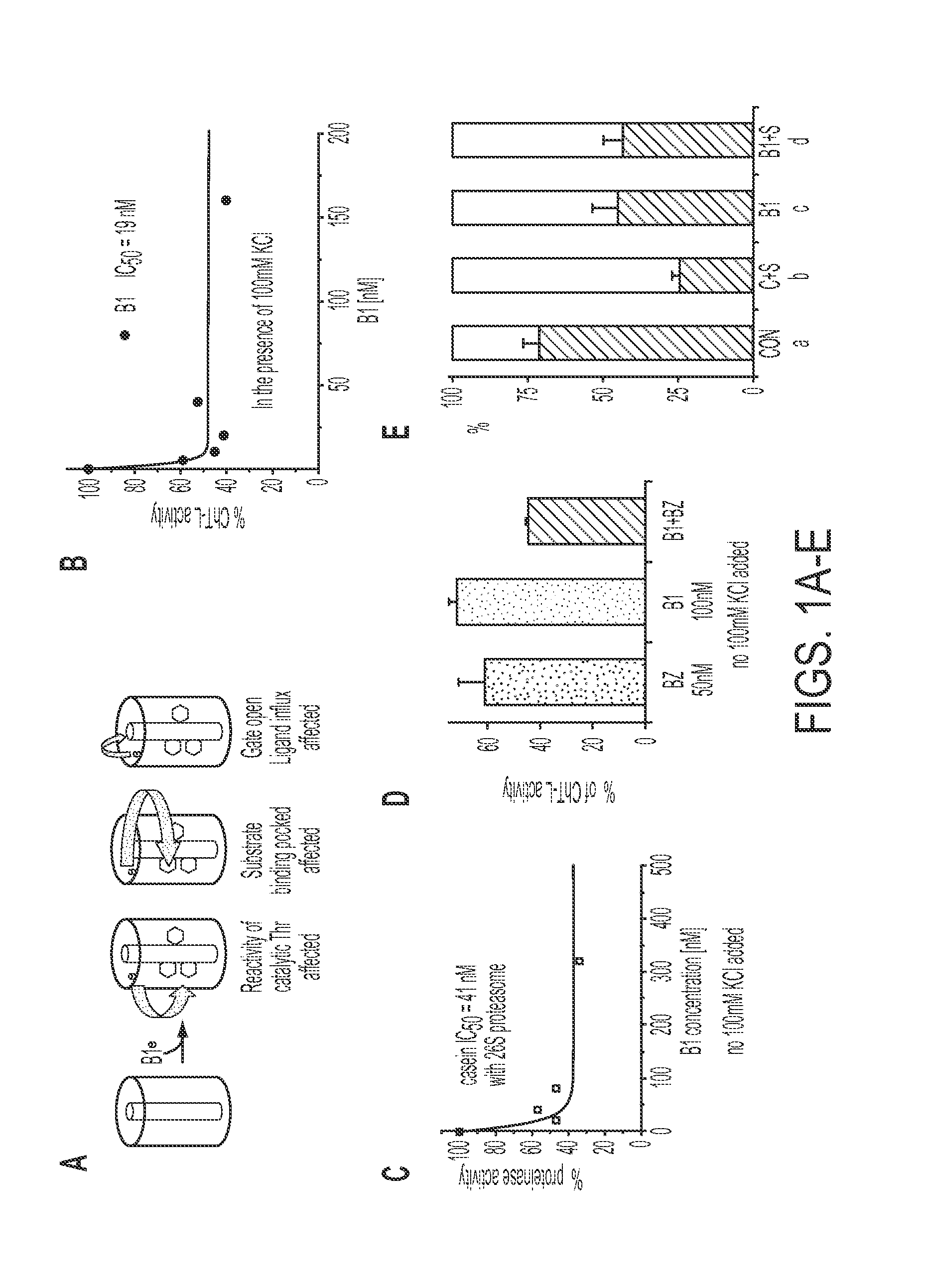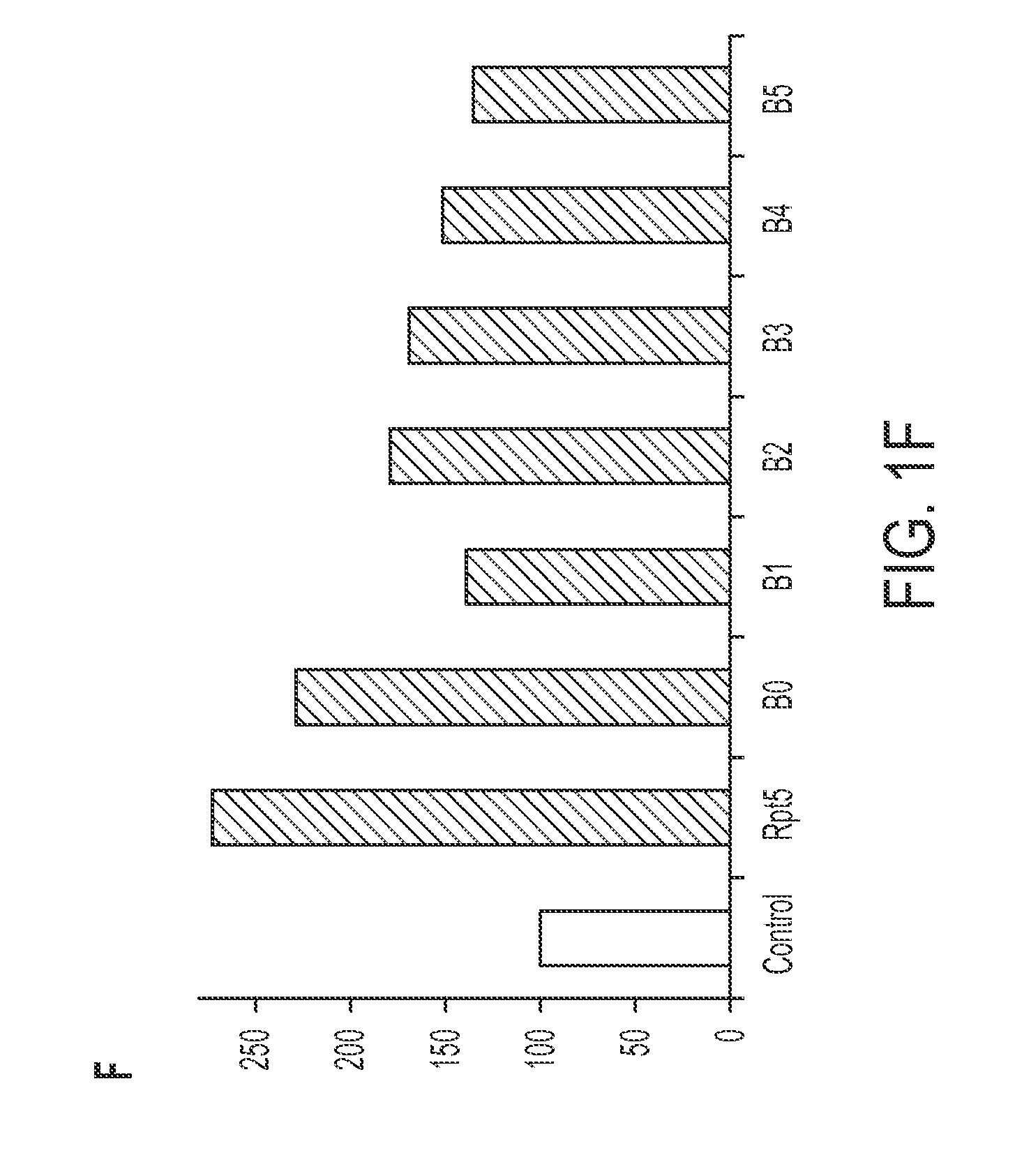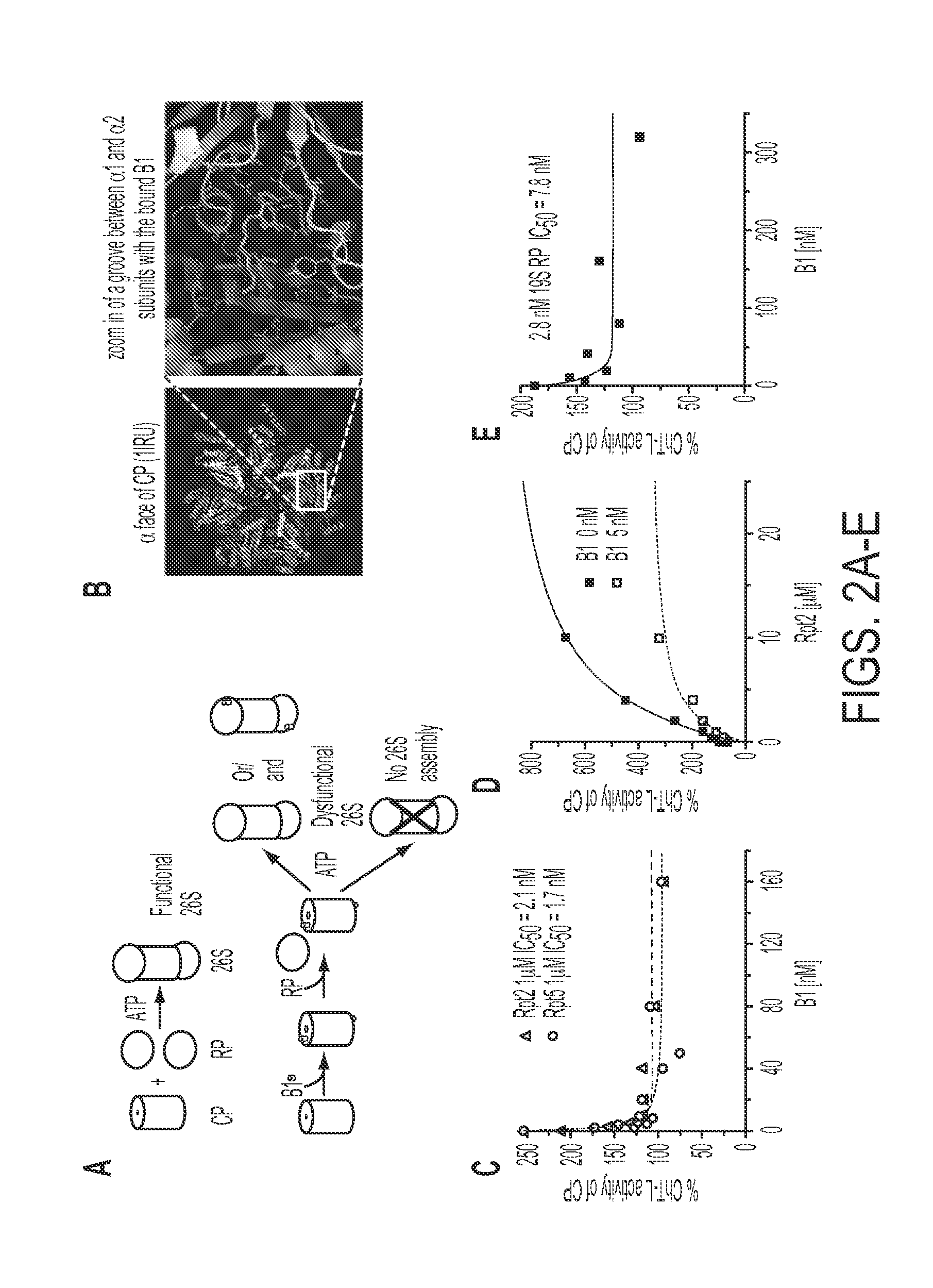Novel allosteric inhibitors of proteasome and methods of use thereof
a proteasome and allosteric inhibitor technology, applied in the field of new proteasome allosteric inhibitors, can solve the problem of no evidence of benefit of bortezomib treatment in these or other breast cancer subtypes
- Summary
- Abstract
- Description
- Claims
- Application Information
AI Technical Summary
Problems solved by technology
Method used
Image
Examples
example 1
Rapamycin Pharrnacophore and Proteasome Inhibitors
[0088]The rapamycin molecule contains two distinct pharmacophores responsible for its potential to dimerize mTOR with FKBP12 and allosterically inhibit mTOR. This peculiar property inspired tests whether rapamycin and related pharmacophores also participates in protein-protein interactions regulating catalytic performance of proteasome. Recently, this disclosure provides that:
[0089]1. Rapamycin and related pharmacophores is a noncompetitive inhibitor of proteasome ChT-L and PGPH peptidase activities.
[0090]2. Only analogs of rapamycin are proteasome inhibitors, whereas competitive inhibitors of mTOR kinase structurally unrelated to rapamycin do not inhibit proteasome.
[0091]3. Rapamycin and related pharmacophores binding to CP increases its affinity to competitive inhibitors such as Bortezomib.
[0092]4. Rapamycin and related pharmacophores destabilizes the 26S proteasome impeding the intracellular activity of 26S proteasome and thus the...
example 2
Molecular Mechanism Between Inhibitor B1 and Competitive Inhibitors
[0096]The novel proteasome inhibitor, B1, inhibits chymotrypsin-like and post-glutamyl peptidases of the core particle via allosteric processes (FIG. 1A-B) with noncompetitive mechanism. The kinetic parameters of the inhibition of the chymotrypsin-like peptidase are: KM=91 microM, Vmax=0.195 nanomoles of product per mg of proteasome per second. Also, it inhibits the proteinase activity of the 26S assembly (FIG. 1C). A synergistic in vitro effect between compound B1 and bortezomib in inhibition of the chymotrypsin-like active site is shown in FIG. 1D. AFM imaging revealed the unusually high content of open-gate conformers in the core particle treated with B1, a feature shared with seco-rapamycin and rapamycin (FIG. 1E). The partition of the conformers was insensitive to treatment with substrates. Since gate dynamics of the core particle is essential for catalysis (Osmulski, et al., 2009), the disruption of gate moveme...
example 3
Molecular Mechanism Between Inhibitor B1 and the Core Particle and the Regulatory Particle
[0097]The compound B1 has been observed to prevent activation of the core particle by the regulatory particle and the HbYX peptides derived from Rpt5 and, in particular, Rpt2 (Rpt5 and Rpt2 tails; FIGS. 2A-D). Molecular modeling indicates that the compound B1 binds in one or more grooves between the a subunits of the catalytic core (FIGS. 2A-B). The grooves are utilized by Rpt2, Rpt3 and Rpt5 subunits that anchor the regulatory particle to the core particle (Lander, et al., 2009). The anchoring C-terminal tails of Rpt2 and Rpt5 subunits are responsible for core particle gate opening and activation (Lander, et al., 2009). Activation of the core by both Rpt2 and Rpt5 tails is affected by B1 (FIG. 2C). The groove accommodating the C-terminal tail of Rpt2 subunit may be a primary docking place for B1, or B1 may allosterically affect binding of Rpt2 C-terminal tail with an exceptionally high efficie...
PUM
| Property | Measurement | Unit |
|---|---|---|
| delay time | aaaaa | aaaaa |
| delay time | aaaaa | aaaaa |
| delay time | aaaaa | aaaaa |
Abstract
Description
Claims
Application Information
 Login to View More
Login to View More - R&D
- Intellectual Property
- Life Sciences
- Materials
- Tech Scout
- Unparalleled Data Quality
- Higher Quality Content
- 60% Fewer Hallucinations
Browse by: Latest US Patents, China's latest patents, Technical Efficacy Thesaurus, Application Domain, Technology Topic, Popular Technical Reports.
© 2025 PatSnap. All rights reserved.Legal|Privacy policy|Modern Slavery Act Transparency Statement|Sitemap|About US| Contact US: help@patsnap.com



